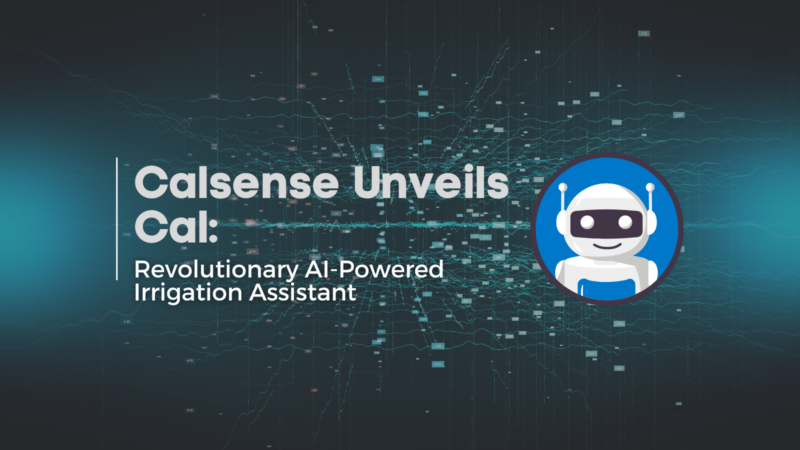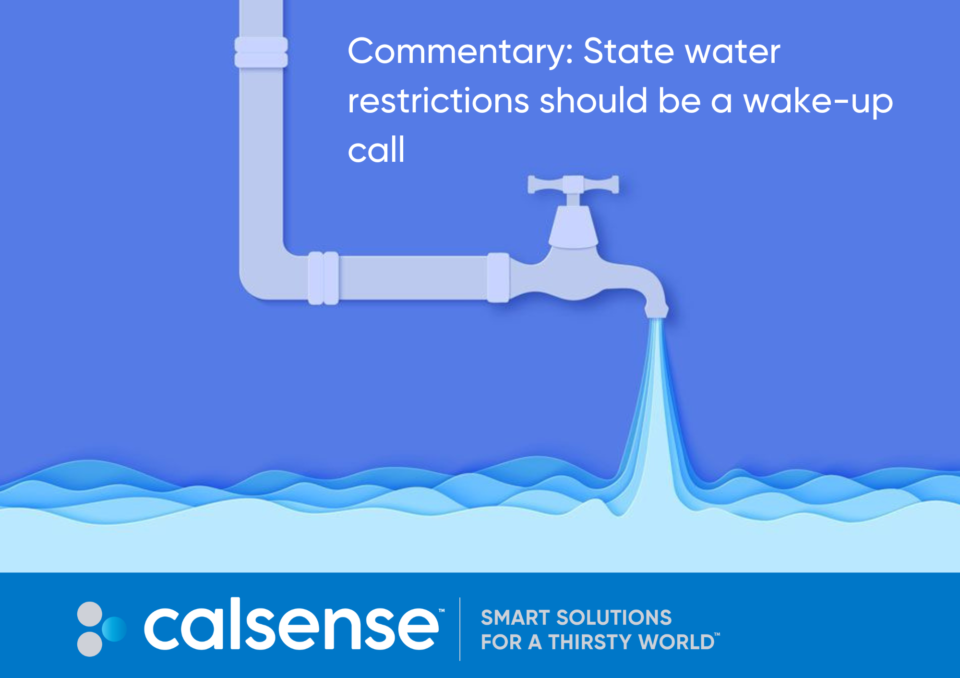
"Introducing 'Cal' - Calsense's groundbreaking AI-powered irrigation assistant, now available 24/7 to optimize your irrigation practices. Discover how Cal transforms water management by providing instant, accurate support.
Learn More
September 13, 2022

In late March, Gov. Gavin Newsom called on local water agencies to implement more aggressive water conservation measures and for the State Water Resources Control Board to look at banning irrigation of decorative grasses around commercial, industrial and institutional buildings.
Then, at the end of April, the Metropolitan Water District of Southern California declared a water shortage emergency, requiring millions of people to cut their outdoor watering to one day a week.
These moves came as no great surprise given the drought conditions our state and much of the West have faced over the last two decades, which has only intensified over the past two years.
In early June, 49% of the lower 48 states were in a drought. Indeed, water restrictions have been announced or mooted not only here in California but also in Arizona, Colorado, Nevada, New Mexico, Utah and Wyoming.
Climate trends suggest water restrictions are likely to become an ongoing fact of life, so there’s an urgent need for us to think about our water use differently.
We must take a holistic approach that considers all the factors contributing to how much water we need to use and how often we use it.
My company is based in Carlsbad. We make smart irrigation systems, so naturally, I’m in favor of their use.
And technology has a central role to play in conserving water. Smart irrigation technology can reduce water usage by up to 40% because it uses weather data and weather and soil moisture sensors to ensure water isn’t wasted.
But technology is not the full answer. There’s a mindset change that needs to take place, too.
Instead of landscaping with non-native plants, for example, native and, in some cases, drought-tolerant plants will often produce better outcomes with less irrigation being necessary.
Mulch, rocks, or recycled tire shavings will help trap the soil’s moisture. Without that ground layer, the soil will evaporate more quickly when exposed to the heat.
Public and commercial enterprises can analyze their entire landscape to utilize irrigation best.
Ideally, they can replace high water usage plants with low water usage plants.
If possible, they should use the sprinkler heads best suited for the particular area of the landscape, whether that’s a micro emitter subsurface drip, rotary nozzle or another of the many options available.
Getting rid of wasteful spray nozzles is critical: 30% of water is lost in the wind. It literally blows away!
They can also look at the soil itself. Without the correct topsoil, losing water to runoff can be significant; solid clay, for example, means the water doesn’t penetrate the soil to get to the plants’ roots.
At home, we can take shorter showers and ensure faucets are not left running.
Those minor adjustments will not have the impact that water restrictions or wholesale innovation in agriculture and other industries will have.
But encouraging home water savings will help us keep water conservation at the top of our minds, making water sustainability a crucial part of our thinking, similar to how we think about recycling paper and plastics.
We should look at more widespread adoption of potable reuse: making water treatment and recycling the norm for landscape use and drinking water.
It’s essential to remove the stigma around water recycling and instead create consumer demand.
Consumer expectation is a powerful force. It would be the most important driver in accepting potable reuse; in the same way, consumer preference has underpinned the widespread take-up of renewable energy today.
That sort of innovative thinking could be incorporated into all aspects of our day-to-day lives; that’s as true for agriculture, industry, governments, municipalities, businesses and commercial property owners as it is for all of us.
We can all agree that we’d like to be surrounded by beautiful landscapes: Beautiful surroundings are fantastic for our mental health and well-being.
But those landscapes should be designed intelligently, using smart irrigation and suitable plant types for the area. They can serve their function, add aesthetic appeal and minimize water waste.
We need a revolution in the way we think about water use. Water is our most precious resource. Let’s be sure we’re treating it that way.
Speak with an expert about your current system and how you can improve it.
Let’s do a free assessment of the challenges you are experiencing and possible solutions.